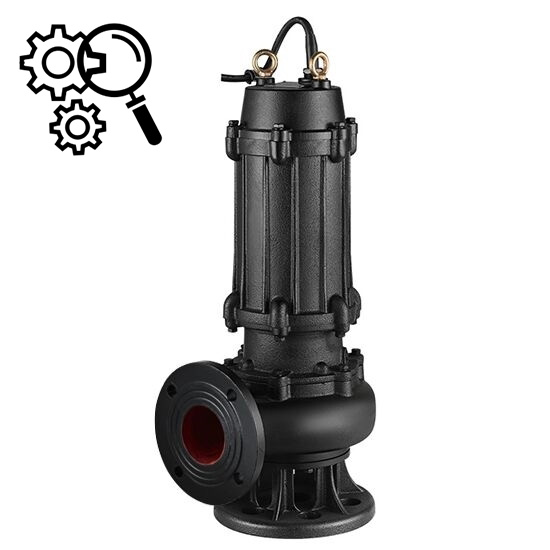Sewage Pump Troubleshooting
Submersible sewage pump has been more and more attention, the scope of use is more and more wide, from the original simply used to transport water to transport a variety of domestic sewage, industrial wastewater, construction site drainage and so on. Sewage pump with compact structure, easy installation and long running time. When we use sewage pump, we should also know how to solve the failure. In this article, we will introduce the troubleshooting of sewage pump.

No water from the pump.
- The sewage pump does not fill enough water before starting, and it seems that the irrigation water has spilled out from the vent hole, but it does not rotate the pump shaft to completely discharge the air, resulting in a little air residue in the inlet pipe or pump body.
- More than 0.5% descent slope should be applied in the reverse water flow direction of the horizontal section of the inlet pipe in contact with the sewage pump. The inlet end connected to the pump should be high, not completely horizontal. Upward tilt, the water inlet pipe will retain air, reduce the vacuum in the water pipe and pump, affecting water absorption.
- Industrial sewage pump packing due to long-term use has been worn or packing pressure is too loose, resulting in a lot of water from the packing and pump shaft sleeve clearance ejected, the result is that the external air from these clearance into the pump inside, affecting the water.
- The water inlet pipe has holes in its wall corrosion due to long-term diving. After the submersible sewage pump works, the water surface keeps falling. When these holes are exposed to the water, the air enters the water inlet pipe from the holes.
- Cracks appear at the inlet pipe elbow and small gaps appear at the connection between the inlet pipe and the water pump, which may make air enter the inlet pipe.
Low pump speed.
- Human factors. Some users are free to use another motor to drive because of the damage of the original motor, resulting in small flow, low head and no water.
- Mechanical failure of the sewage water pump itself. Impeller and pump shaft fastening nut loose or pump shaft deformation and bending, resulting in more impeller movement, direct friction with the pump body, or bearing damage, are likely to reduce the pump speed.
- Poor maintenance of power machine. Motor winding burned, and loss of magnetism, maintenance of winding turns, wire diameter, wiring method change, or maintenance of the fault is not completely eliminated factors will also make 1 hp submersible sewage pump speed change.
The pump suction range is too large.
Some water source is deeper, or some water source periphery potential is more flat place. And ignore the pump allowable suction range, resulting in less water absorption or no water at all. High head sewage pump suction port can establish vacuum degree is limited, vacuum degree is too large, easy to make the pump water gasification, adverse to the pump work. Each centrifugal pump has its maximum allowable suction range, generally between 3-8.5 meters.
Excessive resistance loss in flow pipe.
The vertical distance from the reservoir to the water surface is slightly less than the pump head, but the water volume is small or cannot be lifted. It is often caused by too long pipe, too many bends in water pipe and too much resistance loss in water pipe. In general, the resistance of 90 degrees elbow is larger than that of 120 degrees elbow, and the head loss of each 90 degrees elbow is about 0.5-1 meters, and the head loss of each 20 meters pipe resistance can be about 1 meter. In addition, some people also arbitrarily pump into and out of the pipe diameter, which also has a certain impact on the head.

